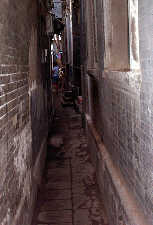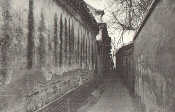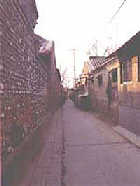| Curiosity > Landscape |
|
|
Beijing's Hutongs
"Hutong" literally means a small street or a lane between two courtyards, although the word can also mean a community within the city consisting of hutongs and residences. Shanghai local people call it a "Nong". Beijing has more than 4,550 Hutong. Most of them were built in the Yuan, Ming and Qing dynasties (1271-1911). Those surrounding the Forbidden City and taking Prince Gong's Residence as the center are the best-preserved. The buildings in Beijing hutongs are mainly compounds with houses around a courtyard, also known as quadrangles. Narrow passages between these quadrangles linked one with the other are hutong. Every hutong has a name. Some hutongs have had only one name since the hutong was formed, but some have had more than five names in the past.
There are many different types of hutongs. The most interesting to tour is in the Shichahai area, which is a scenic spot. It includes three lakes. They are Front Sea, Back Sea and West Sea. There are many historic scenes around this area. You can see Bell and Drum Towers, Prince Gong's Mansion and many hutongs. The oldest hutong in Beijing is called Sanmiao Street. It has been there for more than 900 years! The longest is Dongxi Jiaomin Lane. The total length of it is 6.5 kilometers. The shortest one had a name of Yichi Street because it was only a little more than ten meters long. Now, it belongs to Meizhuxie Street. Usually most of Beijing's hutongs are straight. However, if
you enter Jiudaowan There is an interesting hutong called Qianshi Hutong near Qianmen (Front Gate). The narrowest section in its middle is only 40 centimeters. When two people pass through it face to face, one has to turn back to the exit of the Hutong and let another pass first. Interesting? You may find that a lot of smaller hutongs have been formed inside bigger hutongs. |
||
All rights reserved. Reproduction of text for non-commercial purposes is permitted provided that both the source and author are acknowledged and a notifying email is sent to us. |
||
 |


